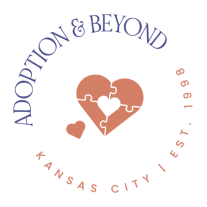Adoption is a complex and sensitive topic that requires careful consideration of the language we use. Today, I’d like to discuss the importance of positive adoption language and the evolving nature of terminology in the adoption process. Let’s explore some key terms:
The Fluidity of Adoption Language
The first thing to realize is that adoption language is fluid, similar to the evolution of politically correct terms. What was considered acceptable in the past may not be appropriate today. Recognizing this fluidity is crucial to maintaining respectful and inclusive communication in adoption discussions.
Birth Parents and Adoptive Families
- One significant change in adoption language is the terminology used for birth parents. Previously, the term “birth mother” was commonly used regardless of whether a child had been placed for adoption. However, it is now more respectful to refer to an “expecting parent” as such until they have made the decision to place their child for adoption. Similarly, adopting families are now referred to as hopeful adoptive parents, acknowledging the ongoing process rather than assuming a finalized adoption.
- The term “birth parents” is more appropriate as it recognizes the role of the parents who give birth to the child. Referring to them as “real parents” implies that adoptive parents are somehow not genuine. “Biological parents” is another accurate term to describe birth parents, avoiding the implication of “natural” versus “unnatural” families.
- The term “parent” is sufficient. Regardless of whether one is a biological parent, step-parent, or adoptive parent, being a parent is a significant role. Avoiding labels such as “adoptive mom” or “adoptive dad” promotes inclusivity and equality in parenting.
Intercountry Adoption and the Adoption Constellation
- In intercountry adoption, the term “intercountry” is preferred over “foreign” adoption. This language acknowledges the global nature of adoption while avoiding the implication of foreignness.
- It’s also important to recognize the wider network of individuals involved in adoption. Instead of referring to the adoption triad or triangle, which implies only three parties (birth parents, adopting family, and adopted child), the term “adoption constellation” is more appropriate. It acknowledges the extended birth and adopting family members who play a role in the adoption journey.
Sensitive Terminology for Adoptees
- When adoptees seek their birth family, it is more respectful to use the term “searching” rather than “tracking down.” “Searching” conveys the act of seeking information with curiosity and respect, whereas “tracking down” carries a connotation of aggression or pursuit.
- Language surrounding children in adoption is crucial. Using the phrase “child placed for adoption” acknowledges that there was a thoughtful plan made for the child’s future, promoting a positive and compassionate perspective. Moreover, when referring to a child with additional needs, “child with special needs” is a more appropriate term, although there is a growing movement toward using “special abilities” to highlight the strengths and potential of these children.
Language plays such an important role in adoption conversations, and using positive adoption language fosters respect and empathy. Remaining sensitive to the evolving terminology surrounding adoption is essential to ensure effective communication and uphold the dignity of all individuals involved.
If you’re ready to learn more about the adoption process, the ALL About Adoption course will help you navigate your next steps.
To learn more about the types of adoption, Adoption & Beyond’s mini-course is designed to help you discover all the different ways you can adopt, while also learning the requirements and next steps for each. Learn more here.
This blog post is provided for educational and informational purposes only. Our services are not financial, business or legal advice. The information presented here is not a guarantee that you will obtain any results or earn any money using our content. Adoption & Beyond, Inc. owns all copyrights to the materials presented here unless otherwise noted.

